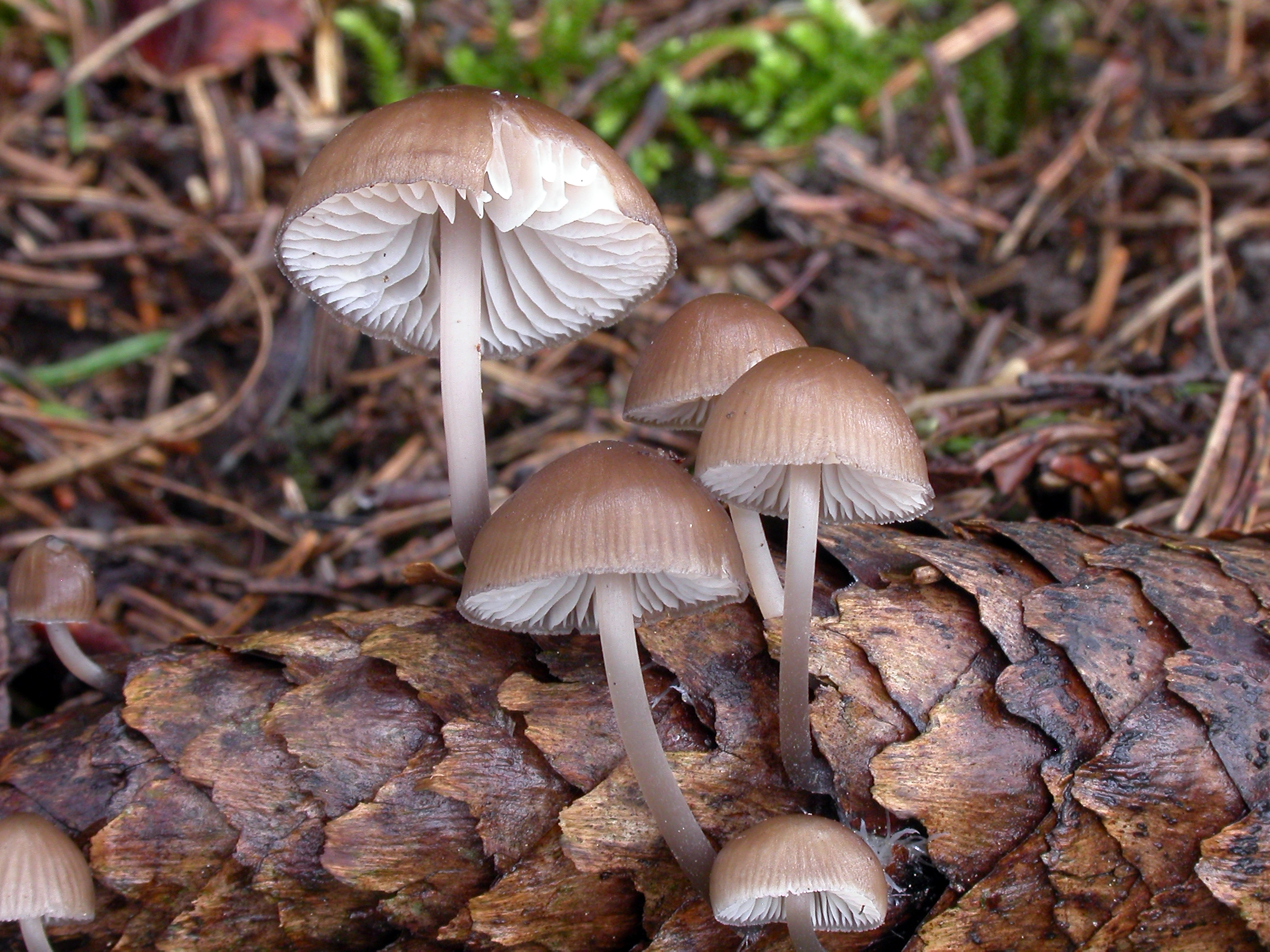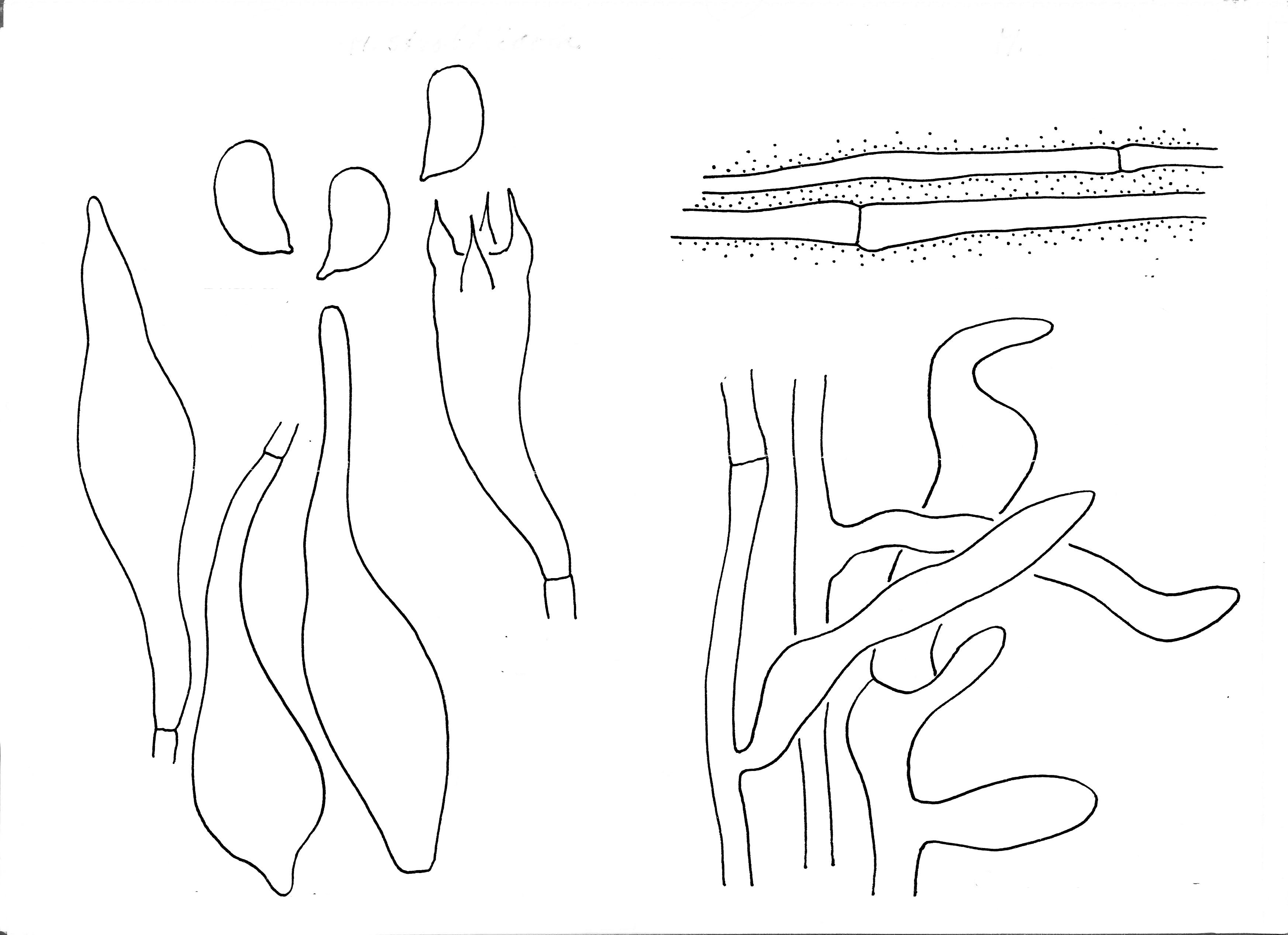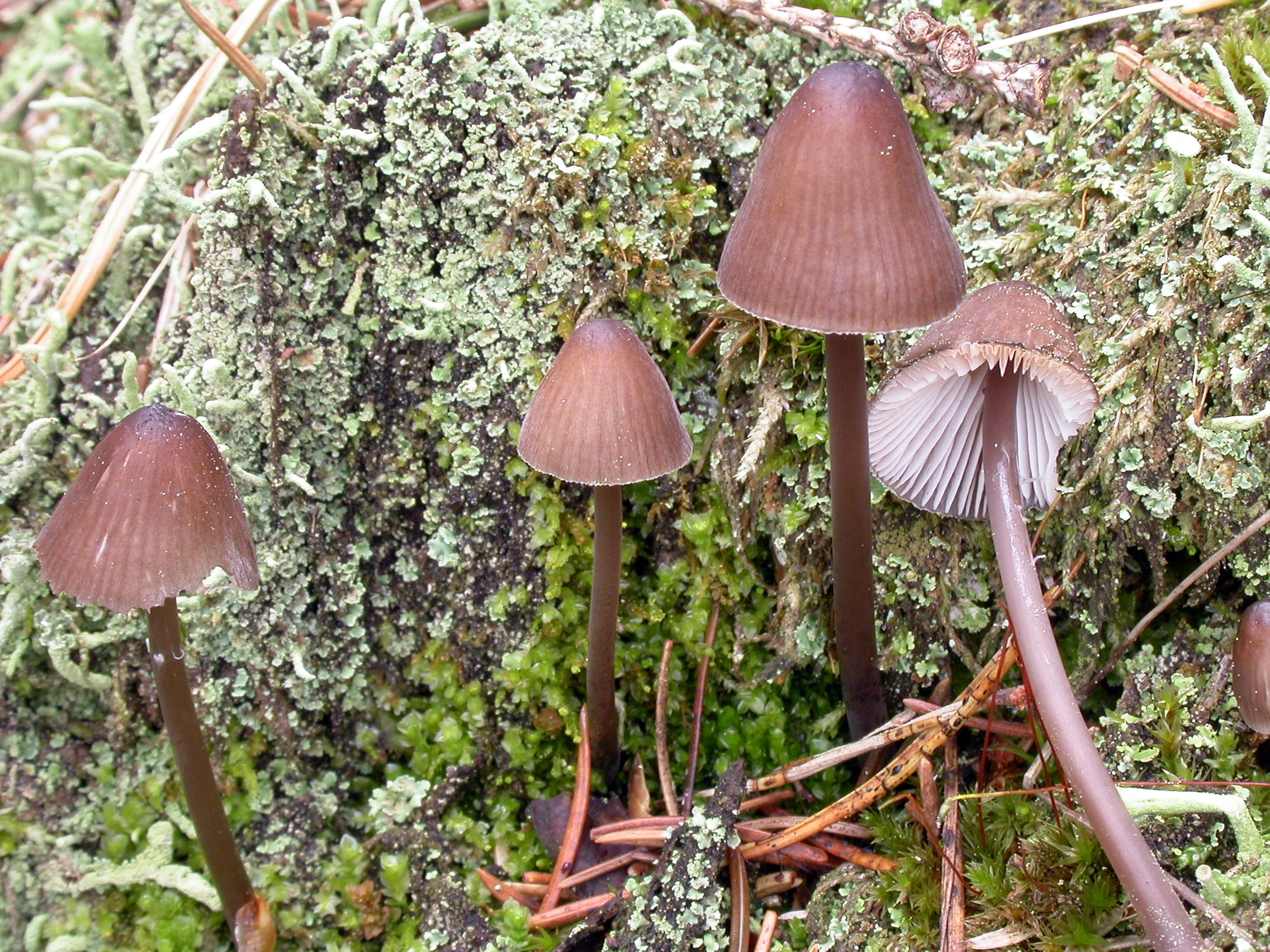Mycena plumipes
Mycena plumipes
Description
Cheilocystidia, spores, basidium, hyphae of the pileipellis, and hyphae of the cortical layer of the stem with caulocystidia.
Cap 8-38 mm across, parabolical, campanulate to conical, often flattening with age with broad umbo, sometimes also somewhat umbilicate, hygrophanous, not sulcate, hardly translucent-striate, glabrous, slightly lubricous, dark chestnut to sepia brown, paler towards the margin. Gills 20-40 reaching the stem, adnexed to adnate, dorsally intervenose in older specimens, whitish to pale grey, sometimes turning pink with age. Stem 30-70 x 1.5-3.5 mm, somewhat firm, cylindrical, equal, glabrous except for the minutely pruinose apex, whitish above, grey brown farther down, and dark brown towards the base, which is covered with coarse, long, whitish fibrils. Odour nitrous. Basidia 22-30 x 7-8 µm, clavate, 4-spored. Spores 7-9.6 x 3.6-5.8 µm, Q = 1.4-1.8, Qav ˜ 1.7, pip-shaped to phaseoliform, amyloid. Cheilocystidia 27-80 x 9-20 x 0-5.5 µm, forming a sterile band, lageniform, fusiform, subcylindrical or more rarely clavate, apically narrowed into a longer or shorter neck, more rarely without a neck. Pleurocystidia similar. Hyphae of the pileipellis 1.5-3.5 µm wide, embedded in gelatinous matter, smooth or very occasionally with an isolated, cylindrical excrescence. Hyphae of the cortical layer of the stem 2-3 µm wide, sligthly gelatinized, smooth, with cylindrical to fusiform caulocystidia up to 100 µm long. Clamps absent (or very rare).
Ecology and distribution
On fallen and often buried cones of Picea. Occuring in the spring. Rather common.


